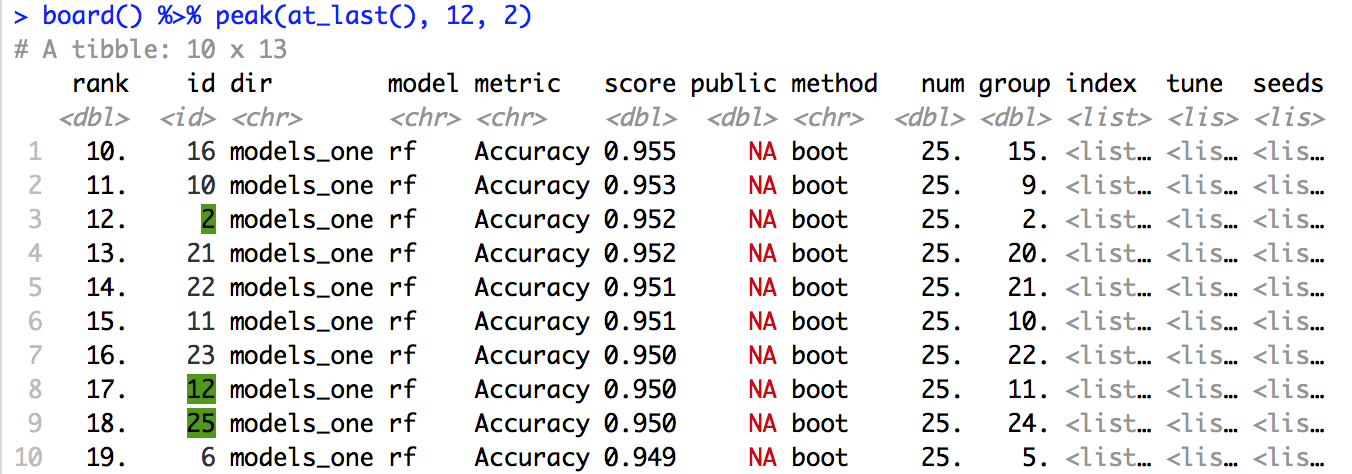The goal of leadr is to stream-line model organization in data science projects and Kaggle competitions. The main function leadr::board takes a caret model and automatically builds a personal leaderboard for the entire project.
This leaderboard allows you to easily sort models by metric (accuracy, RMSE, etc.) and ensures that you never lose track of a good model during interactive analysis.
Installation
The package is not currently available on CRAN. You can install the development version with:
# install.packages("devtools")
devtools::install_github("tmastny/leadr")Getting Started
Let’s say you want to build a classifier for the iris data set. We start by initializing an R project with this directory:
.
└── iris.RprojThen we fit our first model.
library(caret)
model <- train(Species ~ ., data = iris, method = 'glmnet')Before leadr, we might create the script glmnet_1.R to record the model, save the train object as a .RDS file, and keep track of the accuracy in a spreadsheet.
With leadr, we only need to do the following:
leadr::board(model)## # A tibble: 1 x 13
## rank id dir model metric score public method num group index
## <dbl> <id> <chr> <chr> <chr> <dbl> <dbl> <chr> <dbl> <dbl> <list>
## 1 1. 1 models… glmnet Accur… 0.964 NA boot 25. 1. <list…
## # ... with 2 more variables: tune <list>, seeds <list>board creates a personal leaderboard for your project that ranks and sorts your model based on the model’s metric. The leaderboard tibble has all the information needed to successfully recreate and document any model.
board also modifies the project directory:
.
├── iris.Rproj
├── leadrboard.RDS
└── models_one
└── model1.RDSAt the project root, board saves the leaderboard tibble as a .RDS file and creates a subdirectory (named /models_one by default) to save all the models. All future models passed to board will be added to the leaderboard and saved in the directory, unless otherwise specified.
Interactive
In the previous example, we did everything from the command line and leadr took care of the organization and documentation. In fact, leadr benefits from interactive use in other ways. For example, leadr uses pillar and crayon to programmatically color outputs:

Vignettes
For a full description of the features, check out my vignettes hosted here: https://tmastny.github.io/leadr/
Introduction: walkthrough of the basic workflow of leadr
Ensembles: overview of the tools that leadr provides to make ensemble models